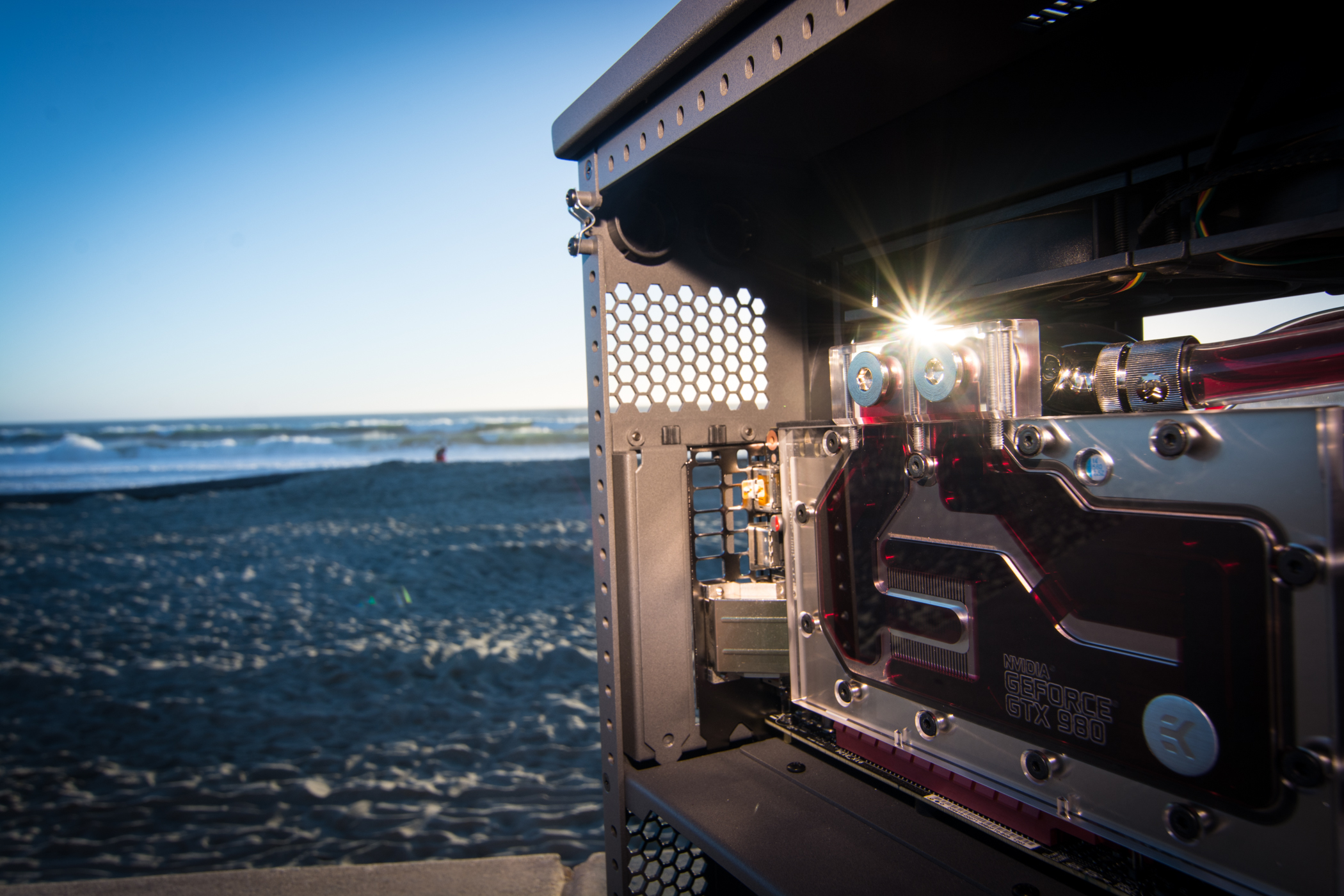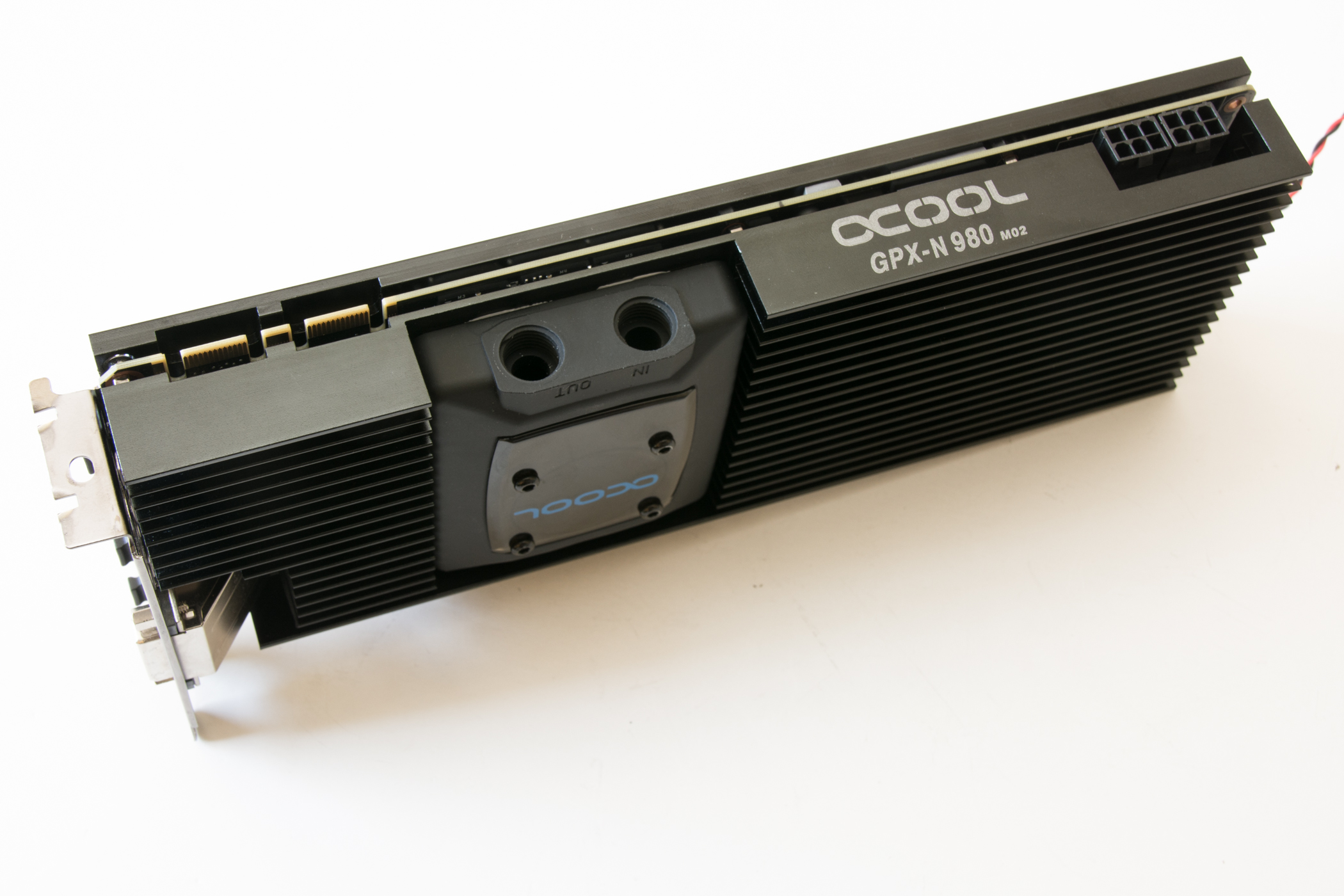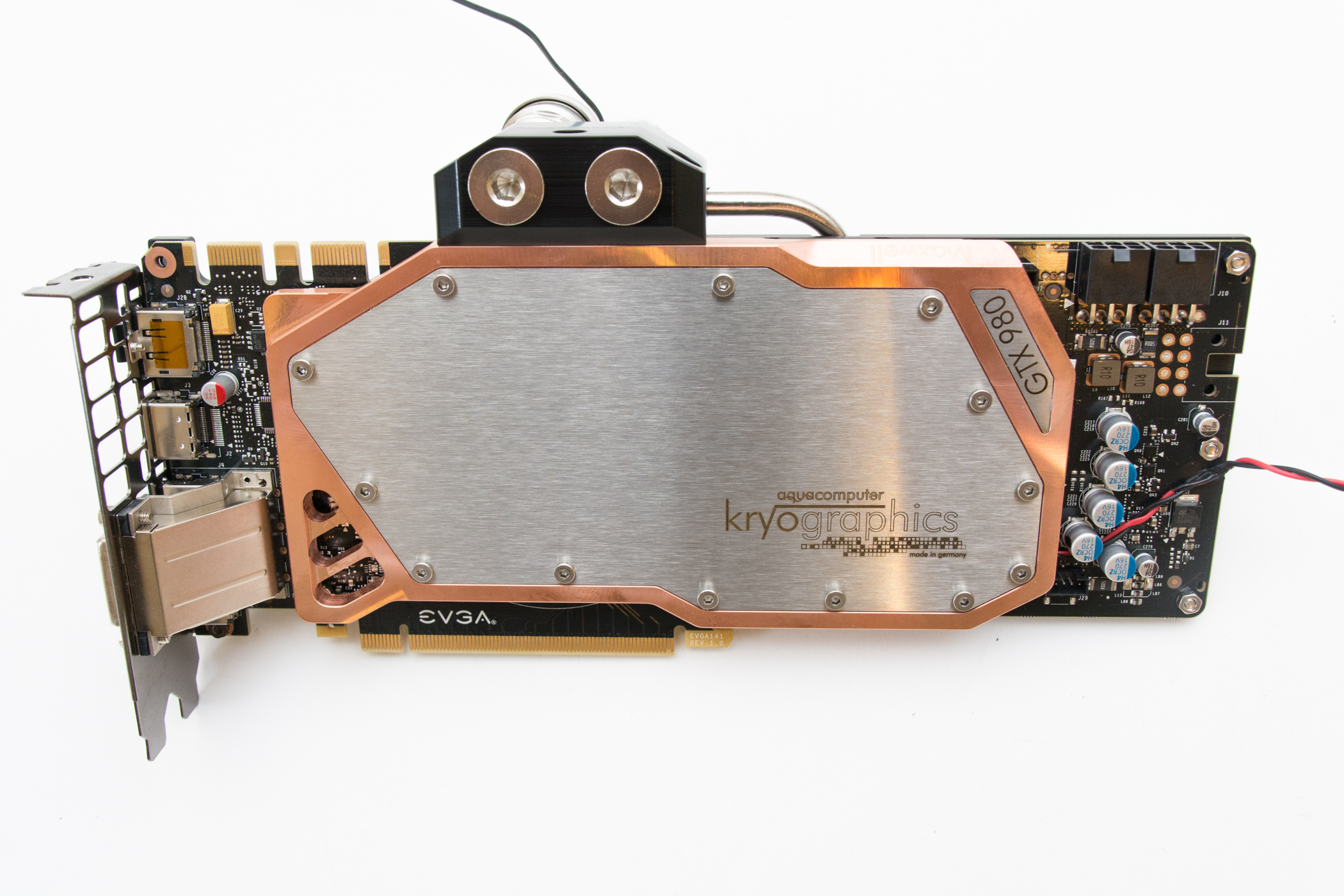EK’s R9-290X/290 GPU water block comes with their usual full array of options:
Plexi + Copper
Plexi + Nickel
Plexi + Nickel Full Cover CSQ
Acetal + Copper Full Cover
Acetal + Nickel Full Cover
There is also a black backplate that matches.
For this review we’ll be testing the Plexi + Nickel version. Packaging is up to EK’s normal high standards for the water block:
However the backplate is simply wrapped in bubble wrap. This contrasts with XSPC and AquaComputer who use the same box for the waterblock as they do for the backplate. Don’t be confused by the Clean CSQ label – this means that the plexi is not frosted and does not have the circles. As opposed to regular CSQ. A better label might have been just “clean” but that might have been confusing.
EK include everything that is needed with the block. This means instructions, TIM (rebranded Gelid Extreme), thermal pads of two thicknesses, screws, stop fittings and an allen key to tighten the stop fittings. It’s worth pointing out that the thin thermal pads are used for memory while the thick ones are used for the two VRM areas. This is in contrast to many of EK’s recent blocks where a single thickness of thermal pad was used (the thinner version). The instructions are clear as usual and the screws are only of one type. There may be extra screws however as the full cover blocks require more. This plexi-nickel version is not full cover:
Due to the design of the reference 290x/290 PCB coolant on a low profile block can not flow directly to the VRM area because of the height of the chokes next to the VRM section. This means there is a break in the copper base and the coolant flows only through the plexi/acetal over to the VRM area. Because of the way this must be milled into the plexi a stainless steel plate is then used to seal the plexi/acetal. This is more easily seen from the rear of the block:
Plexi always looks great with dyed coolant:
And it also shows the two channels that hop up to go to the VRM section well:
The bridge as always with EK is easily removed and replaced with a multi GPU bridge if required:
The backplate is optional, and is used to improve cooling while adding rigidity to the PCB. Some graphics cards will warp under the weight of a water block and a backplate can help reduce that warp. It comes with all the necessary accessories regardless of which version of the block you chose:
The aluminum backplate is finished with semi gloss black finish that shows the fine milling marks leftover from production:
The effect is quite nice and the fact that EK only reveals 5 exposed (but countersunk) black bolts used to attach the backplate. There is a sixth bolt that attaches from the other side of the GPU. The underside of the backplate is milled to avoid contact with any parts of the PCB. There are two thermal pads pre cut to be fitted to the backplate. One attaches to the VRM area, while the other attaches to the back of the GPU core.
Once fitted the backplate gives a pleasing stealthy look:
Overall the block and backplate are nice, well thought out and with attention to detail where it counts. For performance results check out the performance summary!
Where to buy:
Performance PC’s Nickel/Plexi $116, Backplate $29





















